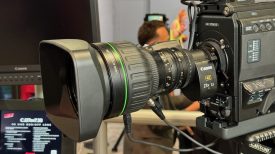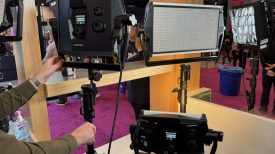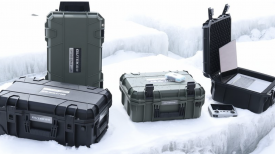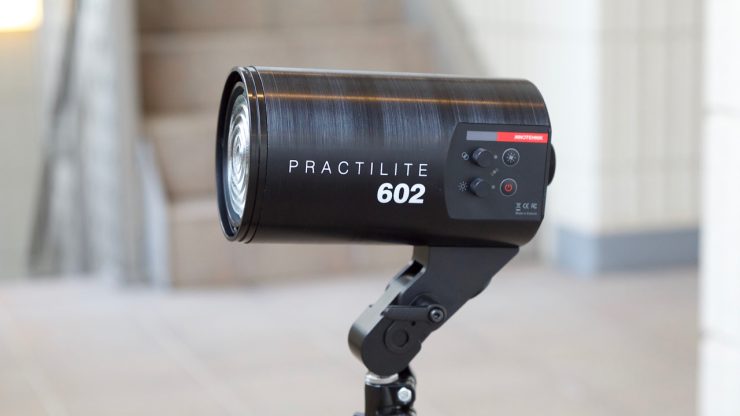
The Kinotehnik Practilite Bi-Color Smart LED Fresnels have been around for quite some time now, but given their feature set I thought it was a good idea to have a look at them in more detail.
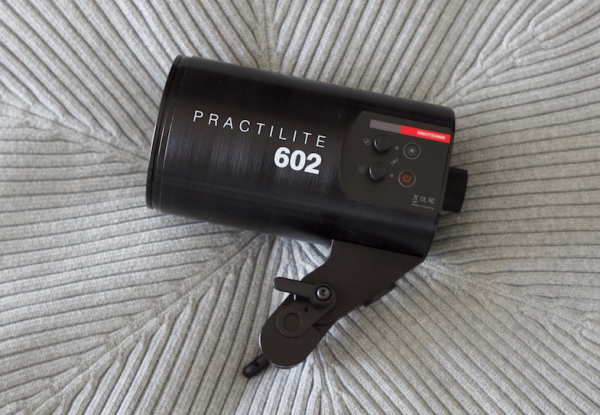
Kinotehnik may not be a name you are familiar with when it comes to lighting fixtures. They originally made a name for themselves with their excellent LCDVFE Electronic viewfinder that was launched way back in 2012. This was arguably the best third party electronic viewfinder of its day and I used one for many years on my Sony F3.
Two years ago at NAB 2015 we first saw a prototype of the Practiite 602. At the time it was the world’s first and smallest bi-colour, variable beam smart LED light. Fast forward two years and Kinotehnik now have three lights that make up the Practilite series- the 600, 602 and 604. Below is just a quick summary of what the three different models offer. I will go into more detail about the lights further down in the article.
Practilite 600
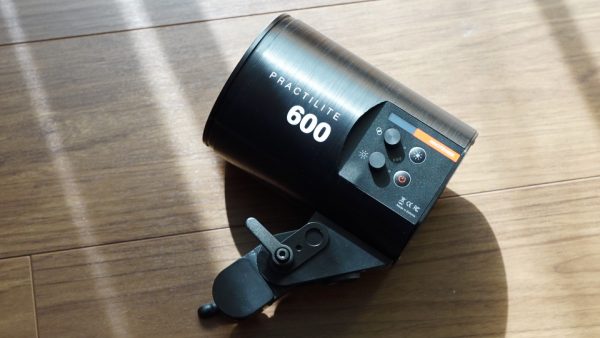
The Practilite 600 is the most compact of the three lights. It is bi-colour with a kelvin colour temperature range of 3000-6000k. Unlike the 602 and 604, the 600 has a fixed 75° beam angle. By using a wide fixed fresnel lens the 600 can throw light a lot further than other conventional LED fixtures. By using a 3.2″ 80mm fresnel lens, the 600 provides a very impressive size to light output ratio. The 602 draws 85W (90W max) of power.
SPECIFICATIONS:
Light Source: Dual Phosphor COB LED
Color Range: 3000 to 6000K
CRI: ≤96
Display: OLED screen
Operating Voltage: 100-240 VAC, 50/60 Hz 12-28 VDC
Power Consumption (max): 85W (90 W)
Dimming: 5-100%
Lens: 3.2″ (80 mm), Borosilicate glass Fresnel
Beam Angle: 75°
Beam Control: Fixed
Cooling: Hybrid
Control:
Local:
Remotely via Practilite Remote Control App iOS 8.0+ and Android
Mount: 5/8″ (Baby)
Barndoors: Not included
Dimensions: 4.0 x 5.5 x 6.0″ (10 x 14 x 15 cm)
Weight: 2.2lbs (1.0kg)
Practilite 602
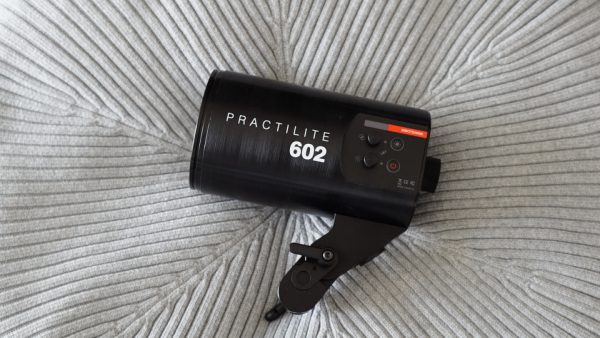
The Practilite 602 uses the same 3.2″ 80mm Borosilicate glass fresnel lens from the 600, but unlike the 600, it has a variable beam angle from 15-75°. It is bi-colour with a kelvin colour temperature range of 3000-6000k. The 602 draws 85W (90W max) and uses a hybrid cooling system.
SPECIFICATIONS:
Light Source: Dual Phosphor COB LED
Color Range: 3000 to 6000K
CRI: ≤96
Display: OLED screen
Operating Voltage: 100-240 VAC, 50/60 Hz 12-28 VDC
Power Consumption (max): 85W (90 W)
Dimming: 5-100%
Lens: 3.2″ (80 mm), Borosilicate glass Fresnel
Beam Angle: 15-75°
Beam Control: Variable
Cooling: Hybrid
Control:
Local:
Remotely via Practilite Remote Control App iOS 8.0+ and Android
Mount: 5/8″ (Baby)
Barndoors: Included
Dimensions: 4.0 x 7.0 x 6.0″ (10 x 17 x 15 cm)
Weight: 2.9lbs (1.3kg)
Practilite 604
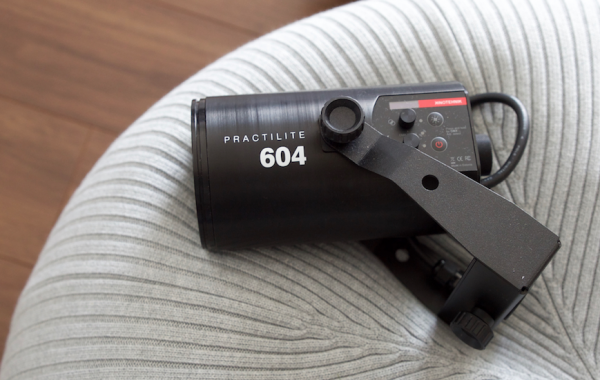
Practilite 604 is the most advanced of the Practilite series and the companies newest fixture. It has a 15-75° beam and is ideally suited for permanent and semi-permanent installations where compact DMX enabled Fresnel lights need to be used. This makes it a good solution for small and home studios for vlogging or even for high quality gallery lighting. Just like the 600 and 602 it is bi-colour with a range of 3000-6000k. It also again uses the same 3.2″ 80mm fresnel lens and draws 85W (90W max).
SPECIFICATIONS:
Light Source: Dual Phosphor COB LED
Color Range: 3000 to 6000K
CRI: ≤96
Display: OLED screen
Operating Voltage: 100-240 VAC, 50/60 Hz 12-28 VDC
Power Consumption (max): 85W (90 W)
Connectivity: DMX-512
Dimming: 5-100% (0-100% via DMX)
Lens: 3.2″ (80 mm), Borosilicate glass Fresnel
Beam Angle: 15-75°
Beam Control: Variable
Cooling: Hybrid
Control: Local
Remotely via Practilite Remote Control App iOS 8.0+ and Android
Mount: 5/8″ (Baby)
Barndoors: Included
Dimensions: 4.0 x 7.0 x 6.0″ (10 x 17 x 15 cm)
Weight: 2.9lbs (1.3kg)
Built to last
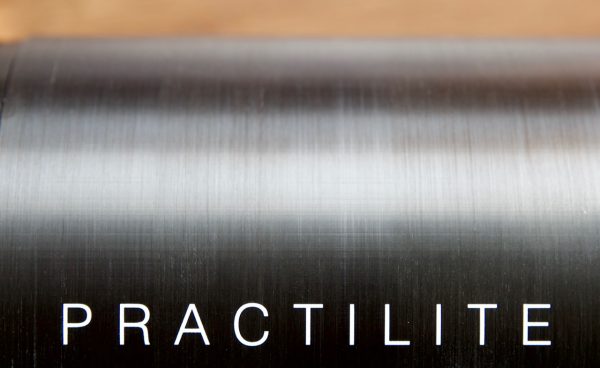
I was very impressed with the build quality of the Practilites. In an age where more and more products feel cheaply made and not designed to stand the test of time, Kinotehnik have done a very good job with these fixtures. All three lights are housed in full CNC-machined aircraft grade aluminium. They feel solid in the hand and the mounting point where you attach the light to a light stand or arm is one of the most robust I have come across.
Proper Fresnel lens
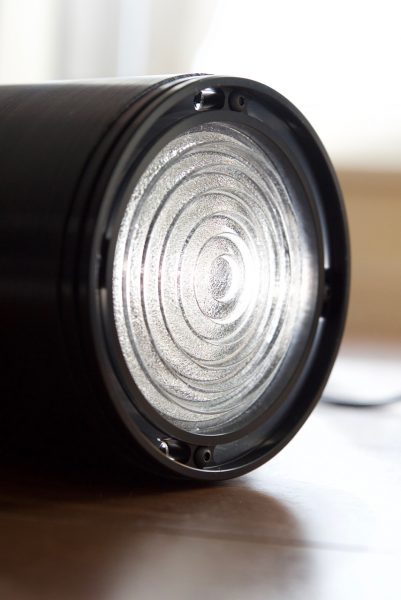
The 3.2″ 80mm fresnel lens is made out of Borosilicate glass, and not acrylic or plastic like many other available options on the market. Borosilicate glasses are known for having very low coefficients of thermal expansion, making them resistant to thermal shock, more so than any other common glass. Borosilicate glass also allows for increased light transmittance through the lens when compared to plastics and lower-quality glass.
Robust power connector
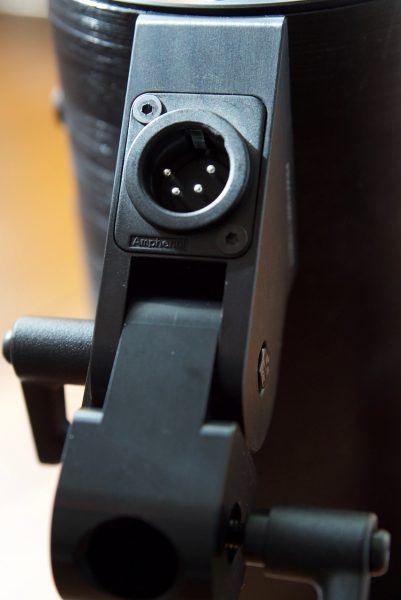
The Practilites use a very secure and robust 4-pin XLR power connector that securely locks into place. This is a professional connector and the same system that is used on the DEDO DLED7 Bi-colour fixtures.
Power draw
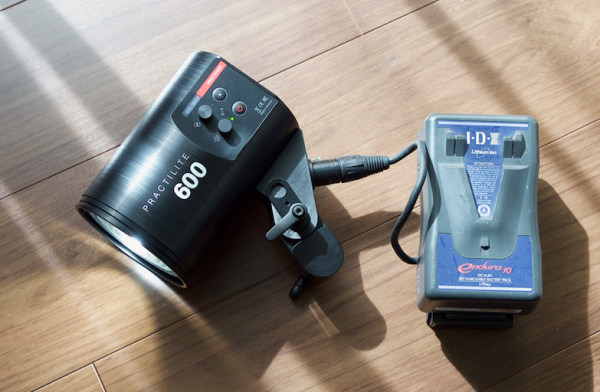
All three lights draw 85W (90W max). They can be powered from a 100-240 VAC, or 50/60 Hz 12-28 VDC source. This means that they are suitable for use anywhere in the world and you can also run them off a camera battery. I used a simple 4-pin XLR to v-lock adapter plate to run the light off a camera battery. I realise not everyone uses V-lock or Anton Bauer batteries, so operating the Practilites remotely in the field may be more difficult for some users.
It doesn’t need to be complicated
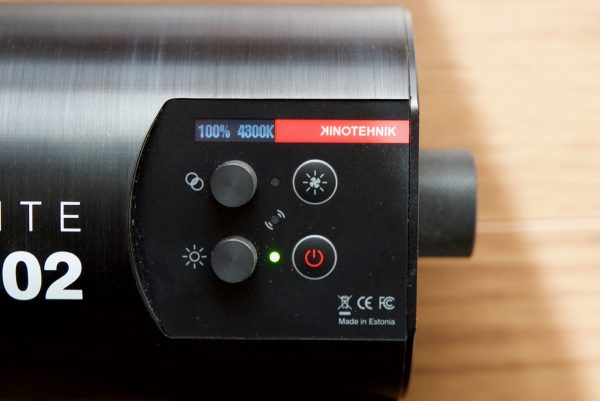
The Practilites have simple but effective controls on the side of the light. There is a small, but easy to see OLED display which gives your clear and concise information about the lights output, kelvin colour temperature and DMX channel in the case of the 604. I found the controls easy to use and adjust. The sign of good design is when you don’t need to consult a manual to work out how to use the product.
Wide beam angle
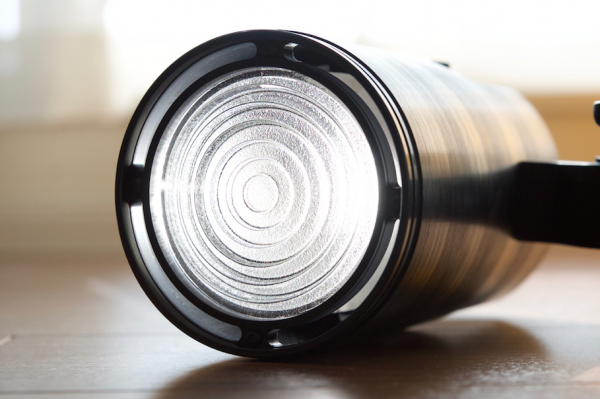
The Practilite 600 has a fixed 75° beam angle while the 602 and 604 can go between 15-75°. This is a large range of adjustment, and being able to go to 75° means you can light up quite a large area, which is is impressive for a light of this size. The fresnel adjustment knob on the back of the 602 and 604 feels solid and making adjustments is very easy.
140% 4500k Light Intensity Boost
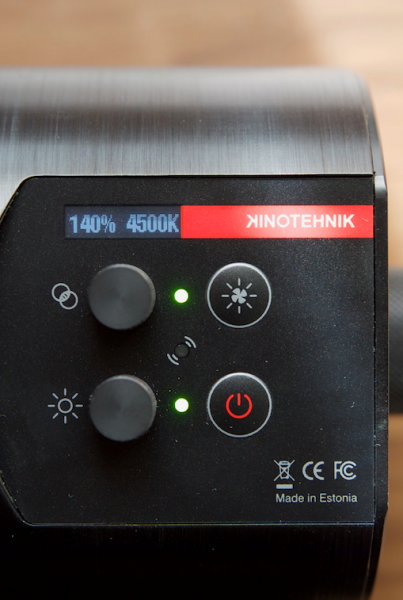
The Practilites have a nice parlour trick up their sleeve that allows you to activate a Light Intensity Boost. This sets the light to 140% output for those times when you need a bit of extra punch. The only downside is that this mode only lets you use a 4500k kelvin colour temperature. It also turns up an inbuilt fan that does create a small amount of noise. On the 600 the noise is barely audible, but on the 602 and 604 it is more noticeable if you have the light in the full spot position. Please note that you can’t use the Light Intensity Boost mode if you are running the light off a camera battery.
Hybrid cooling
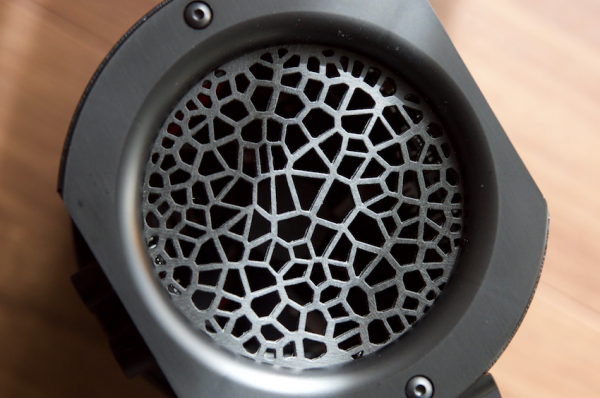
The Practilites feature an in-built fan that is always on (although it’s barely audible). If you use the 140% 4500k Light Intensity Boost mode then the fan does become louder.
Instruction manual
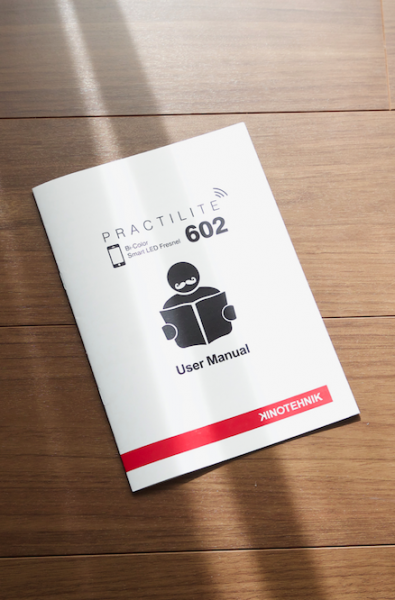
Yes, the light actually comes with an instruction manual. Why so many manufacturers these days feel that they don’t need to include a proper paper manual is beyond me. The Pactilite manuals are concise, easy to follow and provide you with all the information you need.
Bluetooth remote control
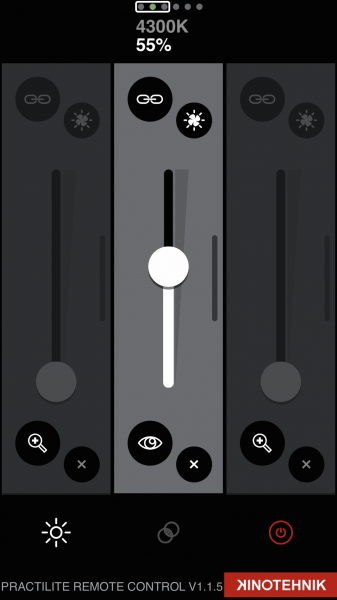
The Kinotehnik Practilite fixtures can all be controlled through a free iOS or Android app. The lights have built in bluetooth connectivity, and unlike some other solutions on the market, you don’t have to buy additional modules or components to make this work. The remote function is especially useful for single-person shooters or small crews when a gaffer is not available. For documentary or news shooters, you can maximise your time when shooting interviews in the field as you can make quick adjustments while standing behind your camera.
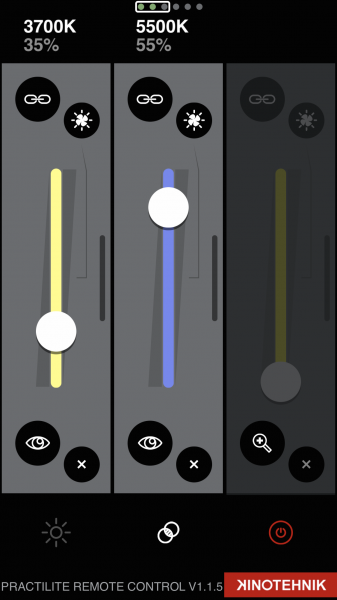
The Practilite Remote Control App allows you to control up to six Practilite fixtures at once. The system is really easy to use and you don’t even need to pair up the lights. All you do is turn on Bluetooth on your phone or tablet and then launch the App. The interface on the App is simple and easy to use. You can control brightness, colour temperature, turn the fixture on/off and you can even make the fixture flash so you know which one you are adjusting. There is also a button to turn on the 140% 4500k Light Intensity Boost Feature.
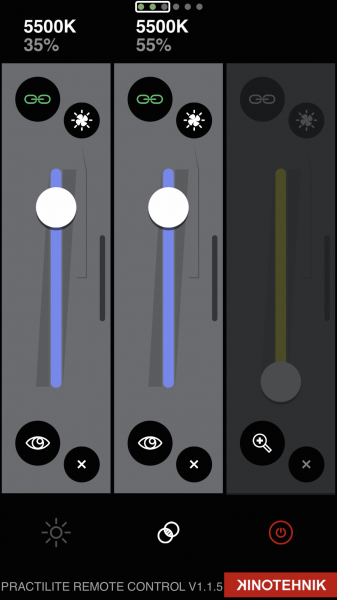
Another nice feature is you can simply press a single button and change all lights to have the exact same colour temperature and output. The App. is one of the best that I have used for controlling a light. There is no point having an App. that is overly complicated to use and that continually needs you to pair the lights. Nice work, Kinotehnik. It’s the little things like this that make a big difference.
Pricing
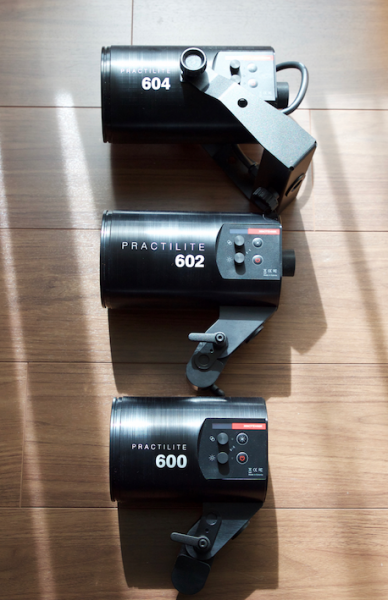
The Practilite 600 retails for $799EUR ($940US), the Practilite 602 is $949EUR ($1116US), and the new Practilite 604 is yet to get a price. This certainly isn’t cheap and puts the lights right in line with fixtures such as the Fiilex P360 Pro Plus in terms of pricing. Kinotehnik also sells a large selection of lighting kits that come in 1510 Pelican cases, and offers free world wide shipping on orders over $95EUR.
Optional Accessories
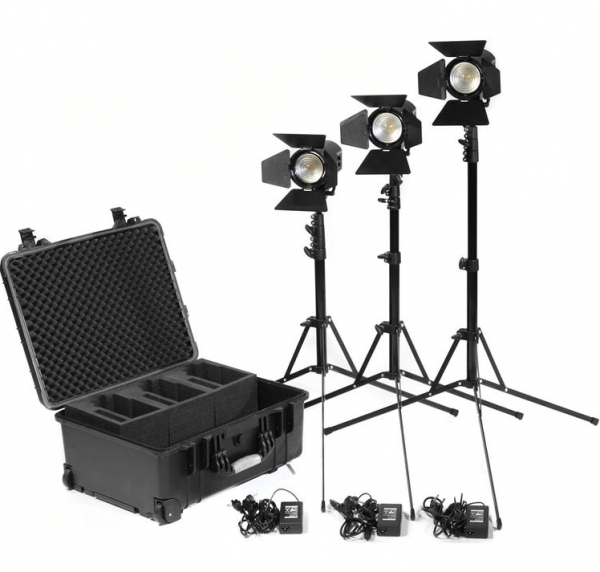
Kinotehnik sells both v-mount battery plates and Anton Bauer battery plates that can be used to power the Practilite fixtures. They also have custom pelican cases, lightstands, as well as a 40cmx40cm softbox that comes with a speedring.
Photometrics
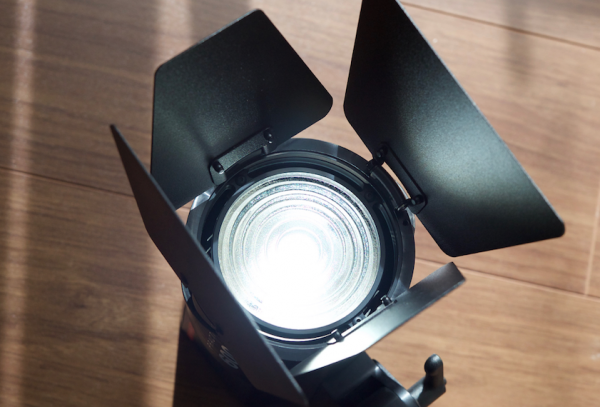
I wanted to see how much output the Kinotehnik Practilites produced in both their maximum spot and flood positions when they were set at both 3200k and 5600k. To do this I measured all the lights in a controlled environment at a distance of 1m (3.28ft) using a Sekonic C-700 Spectromaster. There is a lot of detail below, so If you aren’t interested in going through it all there is a summary available.
Practilite 600
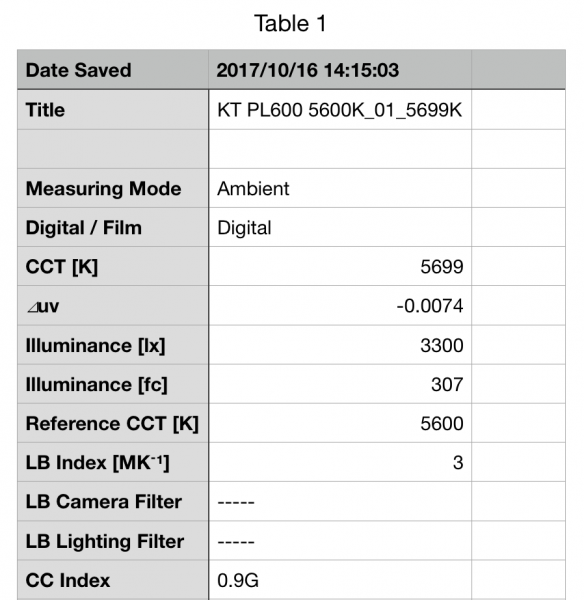
Above you can see the figures I got for the Practilite 600 (fixed 75° beam angle) when set at 5600k and 100% brightness. The light recorded an output of 3300lx and a kelvin colour temperature of 5699k. The light did record a CC Index reading of 0.9G. Any reading over +/- 1.0 and you really do need to colour correct the light with a gel.
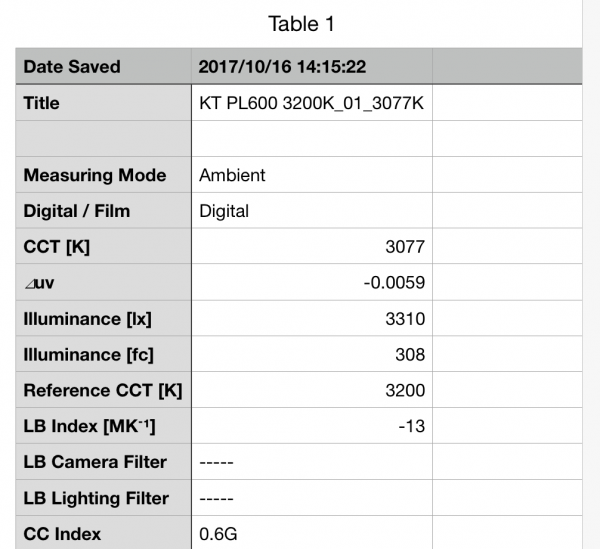
Above you can see the figures I got for the Practilite 600 (fixed 75° beam angle) when set at 3200k and 100% brightness. The light recorded an output of 3310lx and a kelvin colour temperature of 3077k. I was very impressed to see that the lights output at 3200k was almost identical to that of when it was set at 5600k.
Summary:
5600k- 3300lx and a kelvin colour temperature of 5699k
3200k- 3310lx and a kelvin colour temperature of 3077k
4500k (140% boost mode)- 5630lx and a kelvin colour temperature of 4564k
Practilite 602
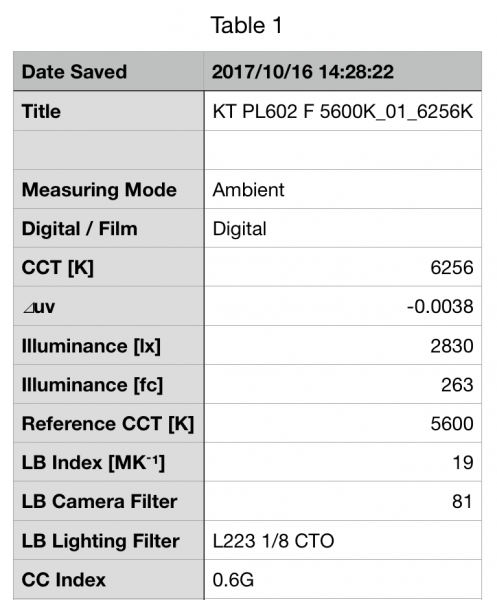
Above you can see the figures I got for the Practilite 602 in its full flood position when set at 5600k and 100% brightness. The light recorded an output of 2830lx and a kelvin colour temperature of 6256k. The 6256k recording was quite a cool colour temperature for a light that should be outputting 5600k.
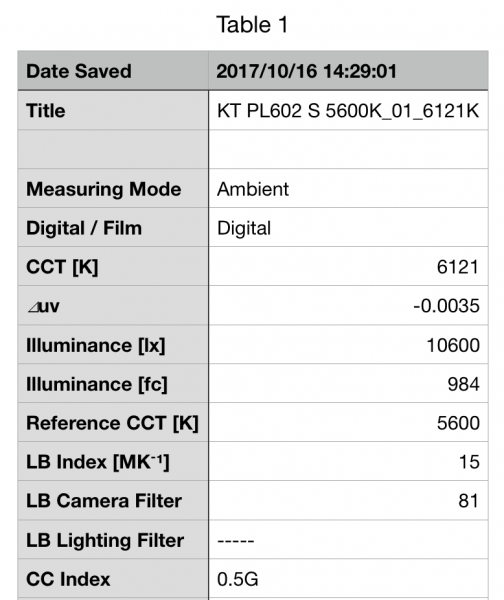
Above you can see the figures I got for the Practilite 602 in its full spot position when set at 5600k and 100% brightness. The light recorded an output of 10600lx and a kelvin colour temperature of 6121k. 10600lx was almost 4x the output compared to when the light was set in its fully flooded position. The 6121k kelvin colour temperature recording in the full spot position was very similar to that of the light went it was fully flooded.
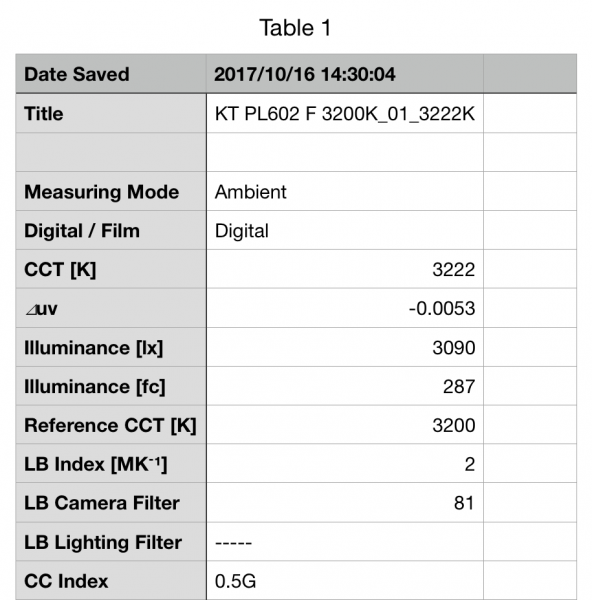
Above you can see the figures I got for the Practilite 602 in its full flood position when set at 3200k and 100% brightness. The light recorded an output of 3090lx and a kelvin colour temperature of 3222k. The 3222k recording was almost perfect for light that should be outputting 3200k. In some what of a surprise, the lights 3090lx output in the flood position at 3200k was higher than that of its flood position at 5600k (2830lx). This tells me that the light is capable of producing a very consistent output regardless of what kelvin temperature it is set at.
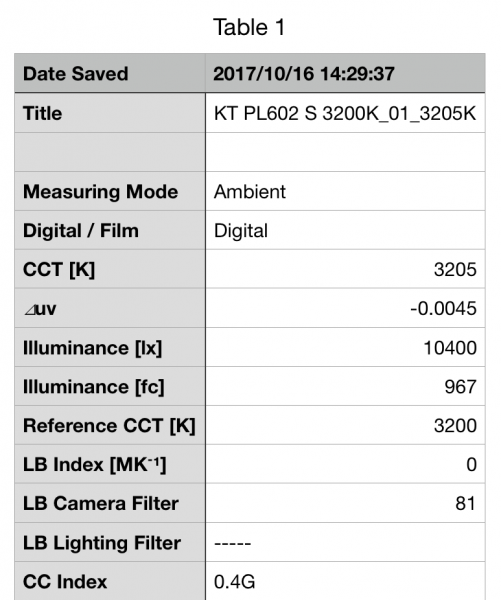
Above you can see the figures I got for the Practilite 602 in its full spot position when set at 3200k and 100% brightness. The light recorded an output of 10400lx and a kelvin colour temperature of 3205k. Again the 3205k recording was almost perfect for light that should be outputting 3200k. The lights 10400lx output in the spot position at 3200k was almost identical to that of its spot position at 5600k (10600lx). This tells me that the light is capable of producing a very consistent output regardless of what kelvin temperature it is set at.
Summary:
5600k (spot position)- 3300lx and a kelvin colour temperature of 5699k
5600k (flood position)- 10600lx and a kelvin colour temperature of 6121k
3200k (spot position)- 10400lx and a kelvin colour temperature of 3205k
3200k (flood position)- 3090lx and a kelvin colour temperature of 3222k
4500k (140% boost mode/flood position)- 4750lx and a kelvin colour temperature of 4750k
4500k (140% boost mode/spot position)- 17000lx and a kelvin colour temperature of 4690k
Practilite 604
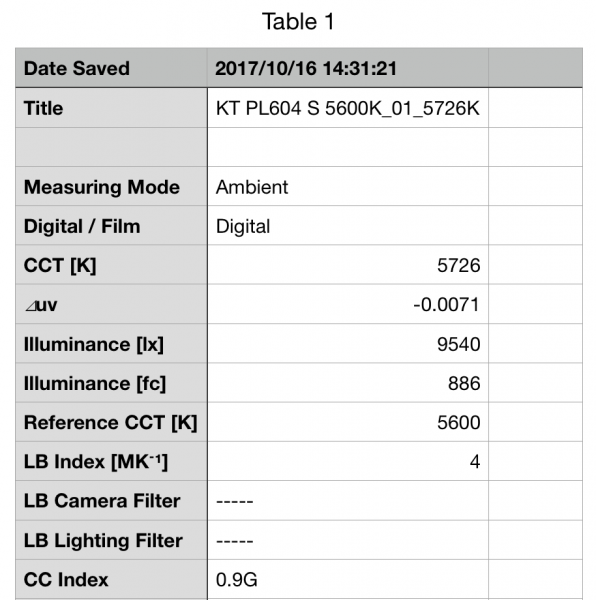
Above you can see the figures I got for the Practilite 604 in its full spot position when set at 5600k and 100% brightness. The light recorded an output of 9540lx and a kelvin colour temperature of 5726k. The 5726k kelvin colour temperature was very accurate for a Bi-color lighting fixture. Just like the Practilite 600 the 604 did record a CC Index reading of 0.9G. Any reading over +/- 1.0 and you really do need to colour correct the light with a gel.
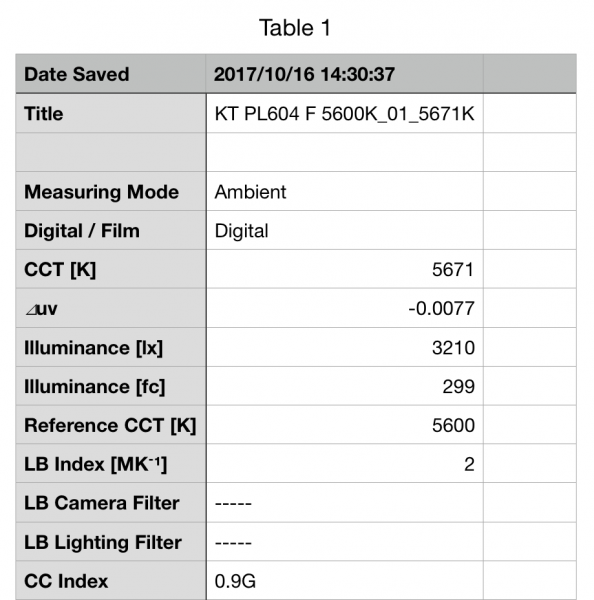
Above you can see the figures I got for the Practilite 604 in its full flood position when set at 5600k and 100% brightness. The light recorded an output of 3210lx and a kelvin colour temperature of 5671k. The 5671k kelvin colour temperature recording in the full flooded position was very similar to that of the light when it was fully spotted.
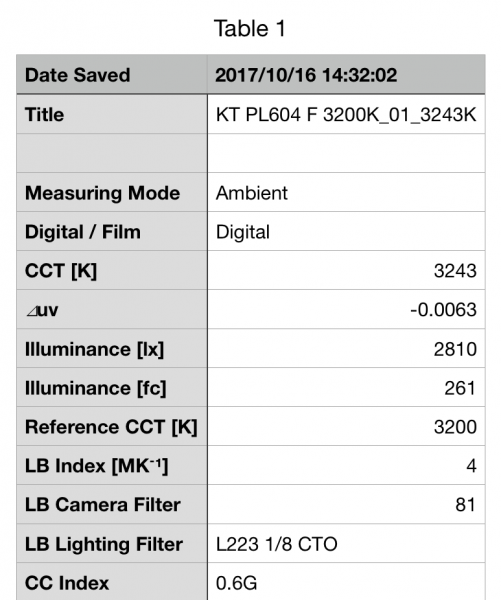
Above you can see the figures I got for the Practilite 604 in its full flood position when set at 3200k and 100% brightness. The light recorded an output of 2810lx and a kelvin colour temperature of 3243k. The 3243k kelvin colour temperature was very accurate for a Bi-color lighting fixture.
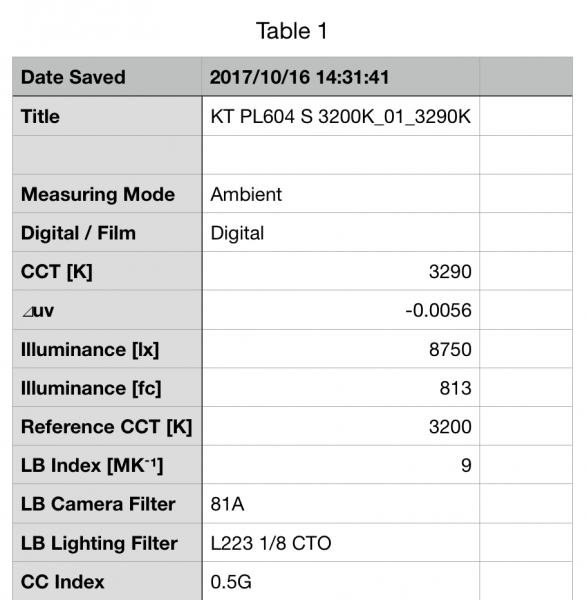
Above you can see the figures I got for the Practilite 604 in its full spot position when set at 3200k and 100% brightness. The light recorded an output of 8750lx and a kelvin colour temperature of 3290k. The 3290k kelvin colour temperature was very accurate. The lights 8750lx output in the spot position at 3200k was not that much lower to that of its spot position at 5600k (9540lx). This tells me that the light is capable of producing a very consistent output regardless of what kelvin temperature it is set at.
Summary:
5600k (spot position)- 9540lx and a kelvin colour temperature of 5726k
5600k (flood position)- 3210lx and a kelvin colour temperature of 5671k
3200k (spot position)- 8750lx and a kelvin colour temperature of 3290k
3200k (flood position)- 2810lx and a kelvin colour temperature of 3243k
4500k (140% boost mode/flood position)- 4310lx and a kelvin colour temperature of 4565k
4500k (140% boost mode/spot position)- 14600lx and a kelvin colour temperature of 4719k
So how does the output and kelvin colour temperature reproduction compare to some of its competition?
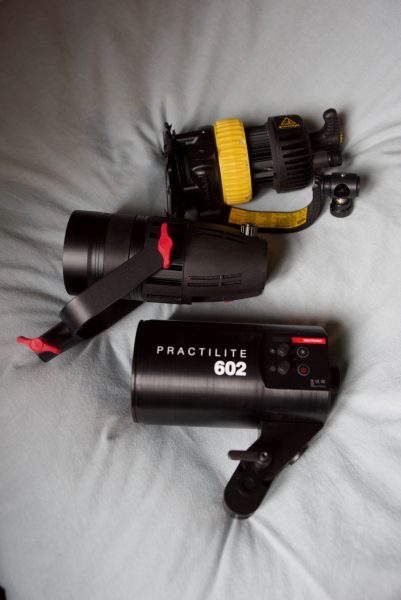
Below you can see figures showing how the DEDO DLED7 Bi-Colour and the CAME-TV Boltzen 55w (the CAME-TV is not bi-colour) compare directly against the Kinotehnik Practilite 604.
5600k (flood position)
DEDO DLED7 Bi-Colour (60°) – 3010lx and a kelvin colour temperature of 5634k
CAME-TV Boltzen 55w* (60°) – 3800lx and a kelvin colour temperature of 5835k
Kinotehnik Practilite 604 (75°)- 3210lx and a kelvin colour temperature of 5671k
* Please note this fixture is 5600k and not Bi-colour
3200k (flood position)
DEDO DLED7 Bi-Colour- 2670lx and a kelvin colour temperature of 3126k
CAME-TV Boltzen 55w^- 3110lx and a kelvin colour temperature of 3395k
Kinotehnik Practilite 604- 2810lx and a kelvin colour temperature of 3243k
^ Please note this fixture is 3200k and not Bi-colour
Colour Rendering
Now that we have seen how much output the Pracilites have, how do they perform when it comes to accurately rendering colours?
Practilite 600
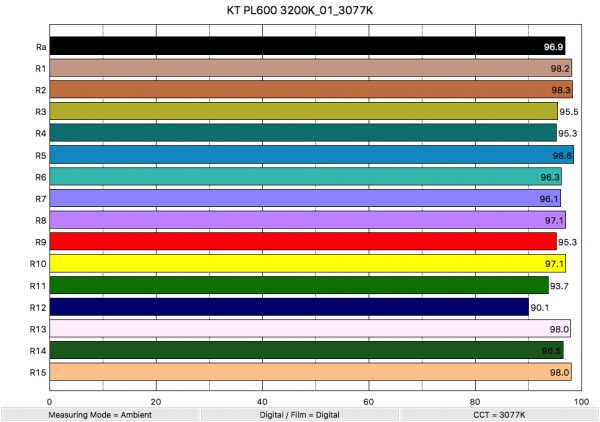
Above you can see the colour rendering scores I got for the Practilite 600 when set at 3200k and 100% brightness. The light recorded a CRI (R1-R8) of 96.9 and an extended CRI (R1-R15) of 96.27. For accurately reproducing skin colours correctly it recorded 95.3 for R9 (red), 98.0 for R13 (closest to caucasian skin tones), and 98.0 for R15 (closest to asian skin tones). These are excellent results and tell me that the light is very good at replicating colours correctly.
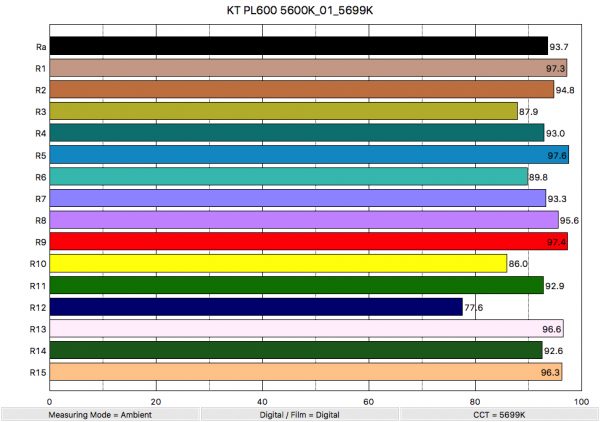
Above you can see the colour rendering scores I got for the Practilite 600 when set at 5600k and 100% brightness. The light recorded a CRI (R1-R8) of 93.7 and an extended CRI (R1-R15) of 92.58. For accurately reproducing skin colours correctly it recorded 97.4 for R9 (red), 96.6 for R13 (closest to caucasian skin tones), and 96.3 for R15 (closest to asian skin tones). While not as good as the results obtained at 3200k, these are still excellent results and tell me that the light is very good at replicating colours correctly.
The Practilite 600 colour rendering scores were excellent regardless of what kelvin temperature you set the light at. At 3200k the light recorded some of the best scores I have seen from a Bi-color LED fixture. The CRI results I got from testing were consistent with Kinotehnik’s own published figures.
Summary:
5600k
CRI (R1-R8) of 93.7
CRI (R1-R15) of 92.58
R9 (red) 97.4
R13 (closest to caucasian skin tones) 96.6
R15 (closest to asian skin tones) 96.3
3200k
CRI (R1-R8) of 96.9
CRI (R1-R15) of 96.27
R9 (red) 95.3
R13 (closest to caucasian skin tones) 98.0
R15 (closest to asian skin tones) 98.0
Practilite 602 (full spot position)
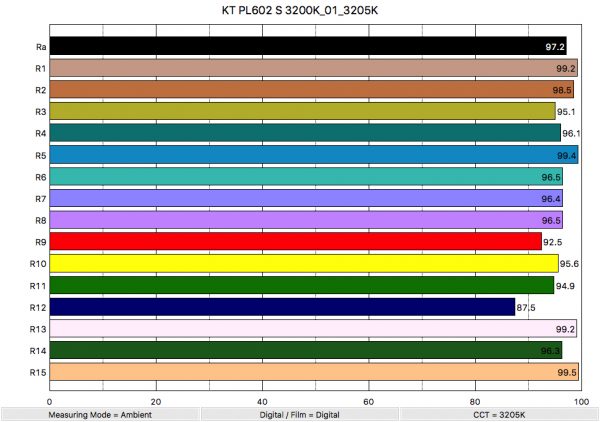
Above you can see the colour rendering scores I got for the Practilite 602 when set at 3200k and 100% brightness. The light recorded a CRI (R1-R8) of 97.2 and an extended CRI (R1-R15) of 96.21. For accurately reproducing skin colours correctly it recorded 92.5 for R9 (red), 99.2 for R13 (closest to caucasian skin tones), and 99.5 for R15 (closest to asian skin tones). These are excellent results and tell me that the light is very good at replicating colours correctly.
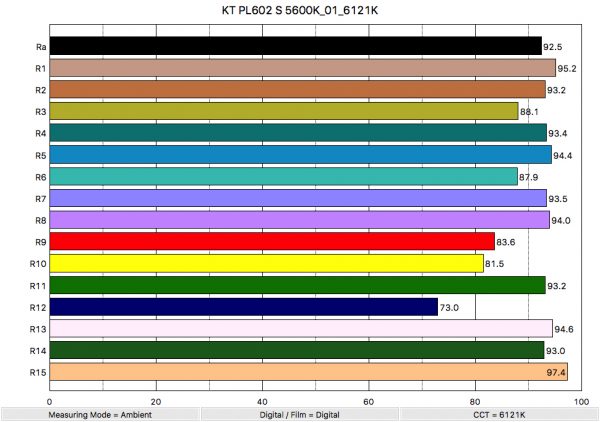
Above you can see the colour rendering scores I got for the Practilite 602 when set at 5600k and 100% brightness. The light recorded a CRI (R1-R8) of 92.5 and an extended CRI (R1-R15) of 90.4. For accurately reproducing skin colours correctly it recorded 83.6 for R9 (red), 94.6 for R13 (closest to caucasian skin tones), and 97.4 for R15 (closest to asian skin tones). These results tell me that the light is very good at replicating colours correctly.
The Practilite 602 colour rendering scores were excellent regardless of what kelvin temperature you set the light at. At 3200k the light recorded some of the best scores I have seen from a Bi-color LED fixture. The CRI results I got from testing were consistent with Kinotehnik’s own published figures.
Summary:
5600k
CRI (R1-R8) of 92.5
CRI (R1-R15) of 90.4
R9 (red) 83.6
R13 (closest to caucasian skin tones) 94.6
R15 (closest to asian skin tones) 97.4
3200k
CRI (R1-R8) of 97.2
CRI (R1-R15) of 96.21
R9 (red) 92.5
R13 (closest to caucasian skin tones) 99.2
R15 (closest to asian skin tones) 99.5
Practilite 604 (full spot position)
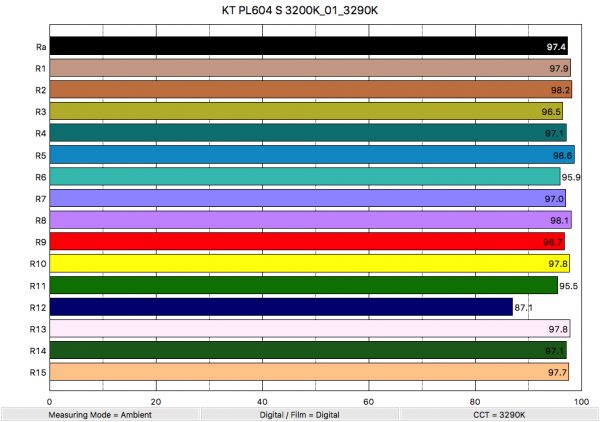
Above you can see the colour rendering scores I got for the Practilite 604 when set at 3200k and 100% brightness. The light recorded a CRI (R1-R8) of 97.4 and an extended CRI (R1-R15) of 96.6. For accurately reproducing skin colours correctly it recorded 96.7 for R9 (red), 97.8 for R13 (closest to caucasian skin tones), and 97.7 for R15 (closest to asian skin tones). These are excellent results and tell me that the light is very good at replicating colours correctly.
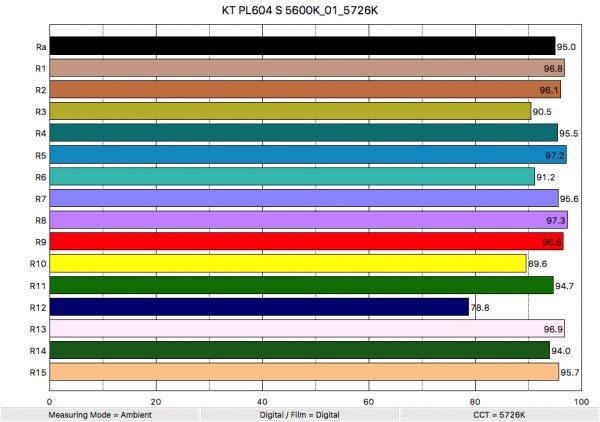
Above you can see the colour rendering scores I got for the Practilite 604 when set at 5600k and 100% brightness. The light recorded a CRI (R1-R8) of 95.0 and an extended CRI (R1-R15) of 93.76. For accurately reproducing skin colours correctly it recorded 96.6 for R9 (red), 96.9 for R13 (closest to caucasian skin tones), and 95.7 for R15 (closest to asian skin tones). These are excellent results and tell me that the light is very good at replicating colours correctly.
The Practilite 604 colour rendering scores were excellent regardless of what kelvin temperature you set the light at. At 3200k the light recorded some of the best scores I have seen from a Bi-color LED fixture. The CRI results I got from testing were consistent with Kinotehnik’s own published figures.
Summary:
5600k
CRI (R1-R8) of 95.0
CRI (R1-R15) of 93.76
R9 (red) 96.6
R13 (closest to caucasian skin tones) 96.9
R15 (closest to asian skin tones) 95.7
3200k
CRI (R1-R8) of 97.4
CRI (R1-R15) of 96.6
R9 (red) 96.7
R13 (closest to caucasian skin tones) 97.8
R15 (closest to asian skin tones) 97.7
So how does the colour rendering performance compare to some of its competition?
Below you can see figures showing how the DEDO DLED7 Bi-Colour and the CAME-TV Boltzen 55w (the CAME-TV is a 5600k only fixture) compare directly against the Kinotehnik Practilite 604.
5600k (flood position)
DEDO DLED7 Bi-Colour
CRI (R1-R8) of 94.2
CRI (R1-R15) of 91.44
R9 (red) 75.7
R13 (closest to caucasian skin tones) 92.7
R15 (closest to asian skin tones) 88.0
CAME-TV Boltzen 55w*
CRI (R1-R8) 96.4
CRI (R1-R15) 95.33
R9 (red) 97.6
R13 (closest to caucasian skin tones) 98.8
R15 (closest to asian skin tones) 94.6
* Please note this fixture is 5600k and not Bi-colour
Kinotehnik Practilite 604
CRI (R1-R8) 97.4
CRI (R1-R15) 96.6
R9 (red) 96.7
R13 (closest to caucasian skin tones) 97.8
R15 (closest to asian skin tones) 97.7
3200k (flood position)
DEDO DLED7 Bi-Colour
CRI (R1-R8) of 97.3
CRI (R1-R15) of 96.34
R9 (red) 97.2
R13 (closest to caucasian skin tones) 98.0
R15 (closest to asian skin tones) 97.3
CAME-TV Boltzen 55w^
CRI (R1-R8) 96.7
CRI (R1-R15) 95.47
R9 (red) 95.9
R13 (closest to caucasian skin tones) 97.7
R15 (closest to asian skin tones) 96.3
^ Please note this fixture is 3200k and not Bi-colour
Kinotehnik Practilite 604
CRI (R1-R8) of 97.4
CRI (R1-R15) of 96.6
R9 (red) 96.7
R13 (closest to caucasian skin tones) 97.8
R15 (closest to asian skin tones) 97.7
How do the lights actually perform?
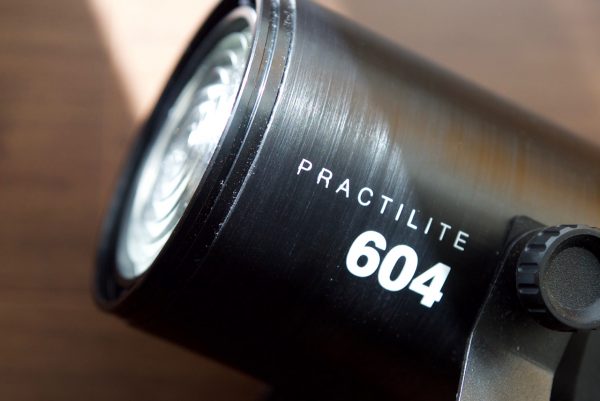
As I say in every lighting review, photometric scores only tell part of the story. Just because a light has good scores doesn’t necessarily mean it is a good light to use.
The Practilites are quick to set up and use, and I think this is one of their greatest strengths. For news and documentary shooters, or even event shooters, you often need lights that are not only portable, but easy to set up and operate. The nice thing about the Practilites for me as a documentary shooter is that you can set them up and then make all your adjustments while standing behind the camera and seeing exactly what that adjustment is doing. When you are working by yourself it’s often a very time wasting process having to go from your camera to a light, make an adjustment and then have to go back to the camera to see what that adjustment did. Of course you can only adjust the colour temperature and output, you can’t spot or flood it remotely. For certain shooters the fact that the lights can only be powered remotely off larger camera batteries in the field may be a deal breaker.
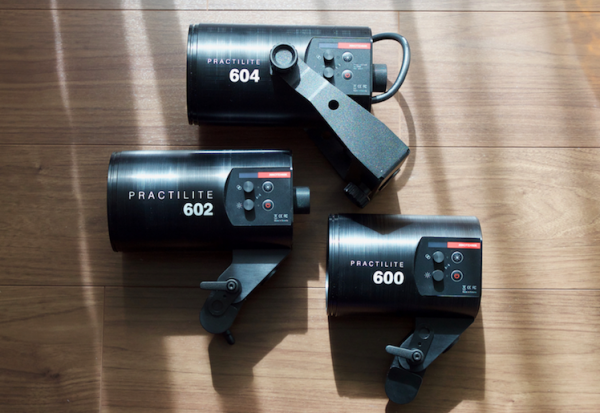
Small, compact LED fresnel lights like this aren’t really suitable for use as a key light in most situations. They tend to be quite harsh and not very flattering to your talent. I could however, see myself using the 600 as a key light with the optional soft box in certain situations where I had to travel with a minimal lighting kit. If you combined it with two 602 fixtures it would make for a pretty versatile 3 light kit that you could cover a lot of scenarios with, especially if you travel a lot.
Colour fringing and light fall off
One of the big things people tend to overlook when testing out LED fresnel lights is colour fringing and fall off. Above you see a test I did comparing the Practilite 602 directly against the CAME-TV Boltzen 55w and DEDO DLED7 Bi-Colour. I chose these two lights to compare as the DEDO and CAME-TV represent two options that sit at two completely different price points. The CAME-TV is significantly cheaper than the Kinotehnik, but the DEDO is a lot more expensive. The camera was pre-set to a 5600k white balance and all lights were set at 5600k and at 100% output.
From the video you can see how each light performed in both its spot and flood positions. The Kinotehnik has a lovely soft fall off which is fairly linear compared to both the CAME-TV Boltzen 55w and DEDO DLED7 Bi-Colour. Below you can see clearly from the luminance scope the difference in fall off between all the lights when they are set in their full flood position.
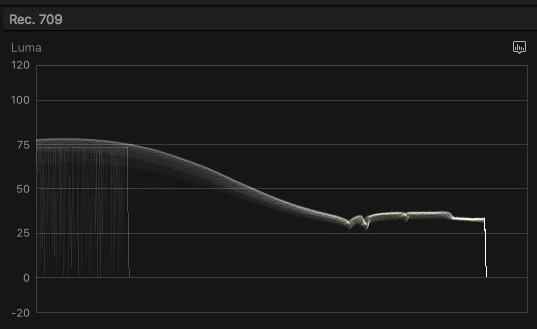
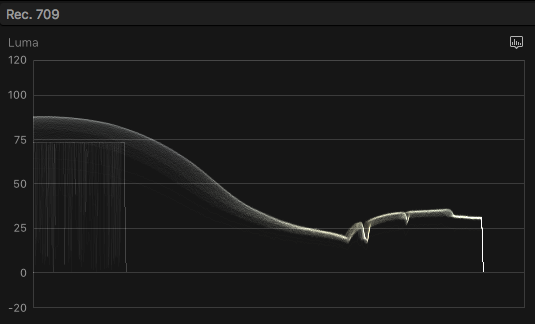
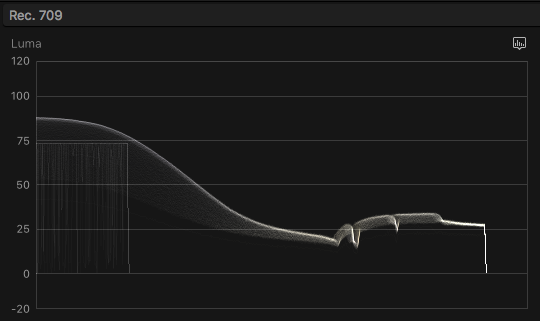
Below you can see the lights fall off when in their full spot positions.
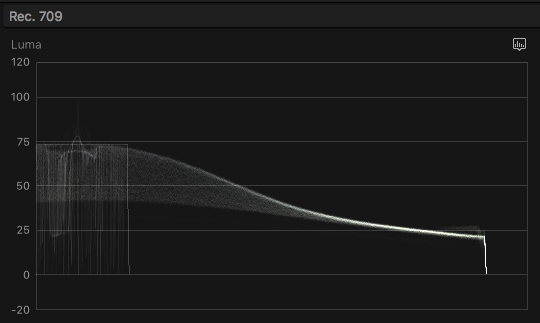
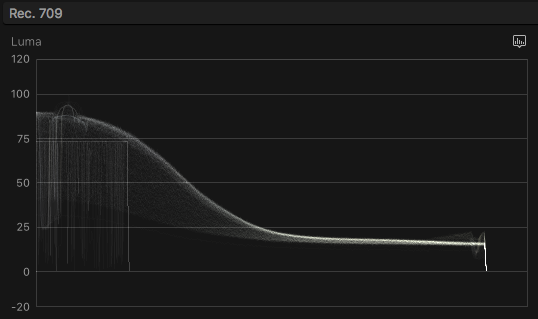
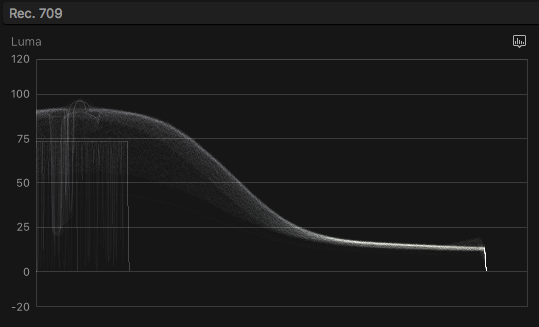
Colour fringing was quite evident on the CAME-TV Boltzen 55W, particularly when the light was spotted up. There was also a mild amount on the DEDO DLED7 Bi-Colour, but almost none on the Kinotehnic Practilite.
Colour cast
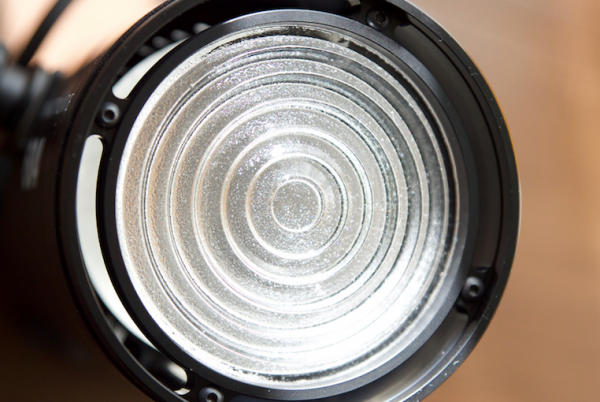
Without balancing for any of the lights and using a pre-set 5600k white balance it as interesting to see the differences in how the lights looked. The Kinotehnik had a slight push towards green, the CAME-TV towards yellow, and the DEDO towards magenta. It is important to remember that this wasn’t done it a controlled environment and there was light spill coming from a window, plus colour casts you would expect to get from light bouncing off coloured surfaces. All three of these lights have very high CRI scores, but in the real world they all have their own look and colour cast. It just goes to show you that photometric scores only tell you part of the story.
Conclusion
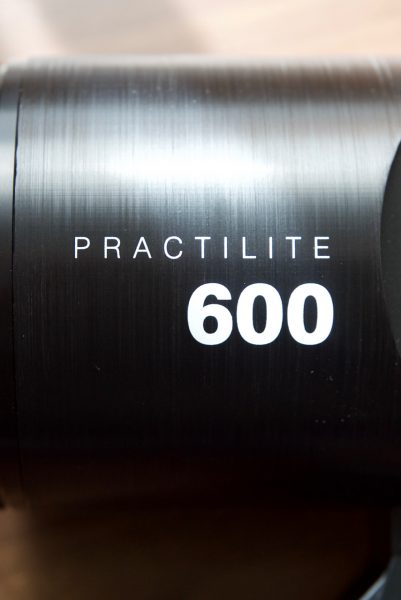
The Kinotehnik Practilites are a very good option if you are looking for a high quality, portable Bi-colour LED light. They are built like a tank, provide a good amount of output and are very colour accurate. The fact that the lights output is almost identical regardless of what kelvin temperature they are set at is a big deal. The light fall off is some of the best I have seen from a LED fresnel fixture. The 15 to 75 degree beam angle on the 602 and the 604 gives the lights a lot of flexibility depending on what you need them to do.
The Bluetooth app is intuitive and easy to use, and most importantly it doesn’t keep crashing or require re-pairing. It’s hard to say anything negative about this light, and believe me, I tried hard to find a flaw.
Despite competition from lights such as the CAME-TV Boltzen series (which aren’t Bi-colour), the DEDO DLED7, and the Fiilex 360 series, just to name a few, the Kinotehnik Practilites certainly stand out. I wouldn’t hesitate in recommending these lights to any professional shooter who was looking for a portable bi-colour fresnel LED fixture.



